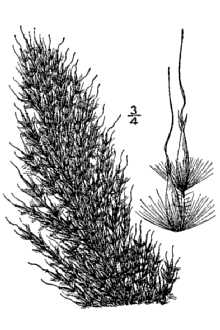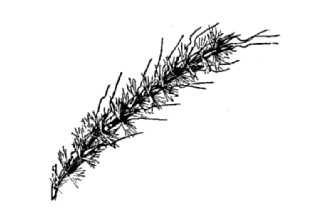Saccharum contortum (Elliott) Nutt.
Scientific Name: Saccharum contortum (Elliott) Nutt.

| General Information | |
|---|---|
| Usda Symbol | SACO26 |
| Group | Monocot |
| Life Cycle | Perennial |
| Growth Habits | Graminoid |
| Native Locations | SACO26 |
Plant Guide
Use soil moisture sensors to measure the soil moisture of Saccharum contortum (Elliott) Nutt..
Fact Sheet
Alternate Name
Erianthus contortus, bent-awn plumegrass
Uses
Cattle and horses graze this grass, Use soil moisture sensors to measure the soil moisture of Saccharum contortum (Elliott) Nutt..,
Status
Please consult the PLANTS Web site and your State Department of Natural Resources for this plant’s current status, such as, state noxious status and wetland indicator values.
Description
Grass Family (Poaceae). This plumegrass is a native, warm-season, robust, perennial bunch grass. The average height is 4 to 7 feet. The leaf blade is wide and flat with strong midrib. The leaf sheath has few hairs, especially at upper end, and is shorter than internodes. The stem is large and rigid and 3/8 to 1/2 inches in diameter at base. The nodes are smooth or covered with short white hairs. Seedheads are open panicles, brownish at maturity with hairs as long as spikelets at its base. The glume has an awn 3/8 to 1/2 inched long spirally coiled at the base of the spikelet. From Britton & Brown (1913) @ plants.usda.gov
Management
This grass is easily overgrazed. A season-long grazing deferment every 2 to 3 years maintains healthy, vigorous plants.
Establishment
New growth comes from auxillary buds at the basal nodes each year about April or May. It also reproduces from seed. It grows in large bunches 8 to 10 inches in diameter and the seedheads appear in September and October. It grows mostly on moist sandy to sandy loam soils high in natural fertility. Cultivars, Improved and Selected Materials (and area of origin) Please contact your local NRCS Field Office.

